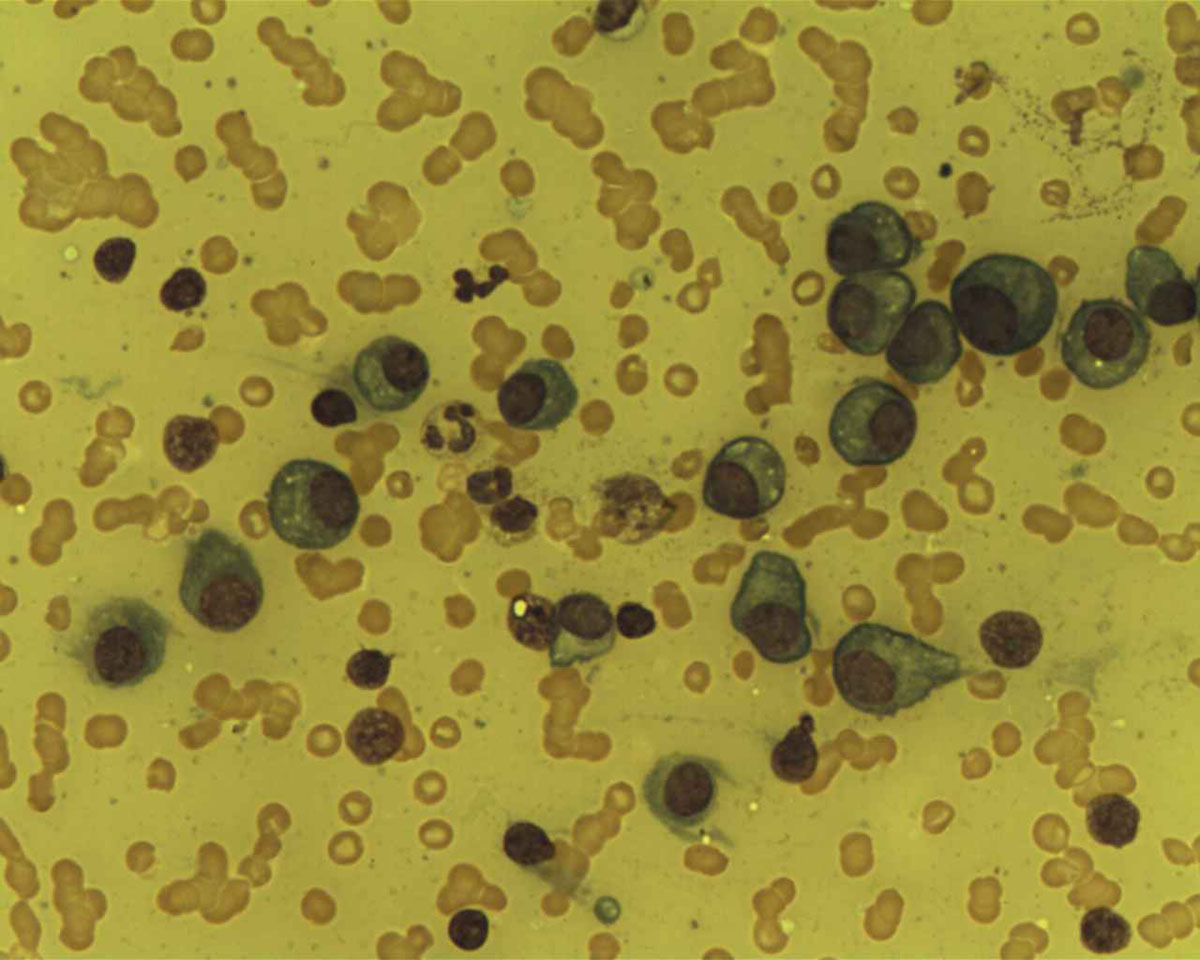
Multiple myeloma is the classified into three stages, known as stage I, stage II and stage III. Staging of myeloma is determined on the basis of serum albumin value and beta-2 microglobulin level.
What is Multiple Myeloma?
Multiple myeloma is a cancer of the plasma cells, type of white blood cells that make proteins known as antibodies. Plasma cells are part of the immune system that helps the body to fight against germs and other harmful substances. These cells are produced in the bone marrow and from it they are carried to other parts of the body via the lymphatic system. Multiple myeloma is a cancer that begins when plasma cells becomes abnormal. These abnormal cells are called myeloma cells. Multiple myeloma is also known as plasma cell myeloma or myeloma. Myeloma cells accumulate in the bone marrow where they over time damage the solid part of the bone. Apart from being classified into stages, the cancer is also divided into two types, namely asymptomatic multiple myeloma and symptomatic multiple myeloma. Asymptomatic multiple myeloma doesn’t have symptoms while symptomatic causes symptoms.
Causes of Multiple MyelomaExact cause of multiple myeloma is still unknown. Still there are several risk factors that contribute development of the disease. Risk factors for multiple myeloma include age over 65, being a man, race (African Americans have the highest risk), family history of multiple myeloma and personal history of monoclonal gammopathy of undertemined significance (MGUS) and obesity.
Symptoms of Multiple Myeloma
Multiple myeloma can harm different tissues and organs such as the bones, kidneys, red blood cells and the immune system. The disease is commonly followed by symptoms such as bone pain, particularly in the back, pelvis, ribs and the skull. High levels of calcium in the blood as well as presence of abnormal proteins in the body are also common. A patient with multiple myeloma may experience unusual thirst and urination, loss of appetite, nausea, constipation, fever and frequent infections due to low immunity.
Stages of Multiple Myeloma
As already mentioned, multiple myeloma is divided into three stages.
Stage I
Stage I multiple myeloma is characterized by value of beta-2 microglobulin below 3.5 mg/L and serum albumin above 3.5 mg/L. In this stage blood calcium levels are still normal as well as red blood cell count. Stage I multiple myeloma usually doesn’t cause any symptoms. Life expectancy in this stage is around 62 months.
Stage IIIn stage II multiple myeloma, beta-2 microglobulin level is less than 3.5 mg/L or between 3.5 and 5.5 mg/L while serum albumin is less than 3.5 mg/L. The median survival time for people with stage II multiple myeloma is 44 months.
Stage III
Stage III of the disease is associated with value of beta-2 microglobulin above 5.5 mg/L. Red blood cell count decreases while blood calcium level notably increases. Survival rate from stage III multiple myeloma is approximately 29 months.
Treatment for Multiple MyelomaTreatment for multiple myeloma depends on the stage of the disease. Generally, multiple myeloma is treated with chemotherapy, radiation therapy and biological therapy. Chemotherapeutic drugs will be determined according to the stage of multiple myeloma. Surgery and bone marrow transplant are also used in treatment of multiple myeloma.

















Your thoughts on this
Loading...